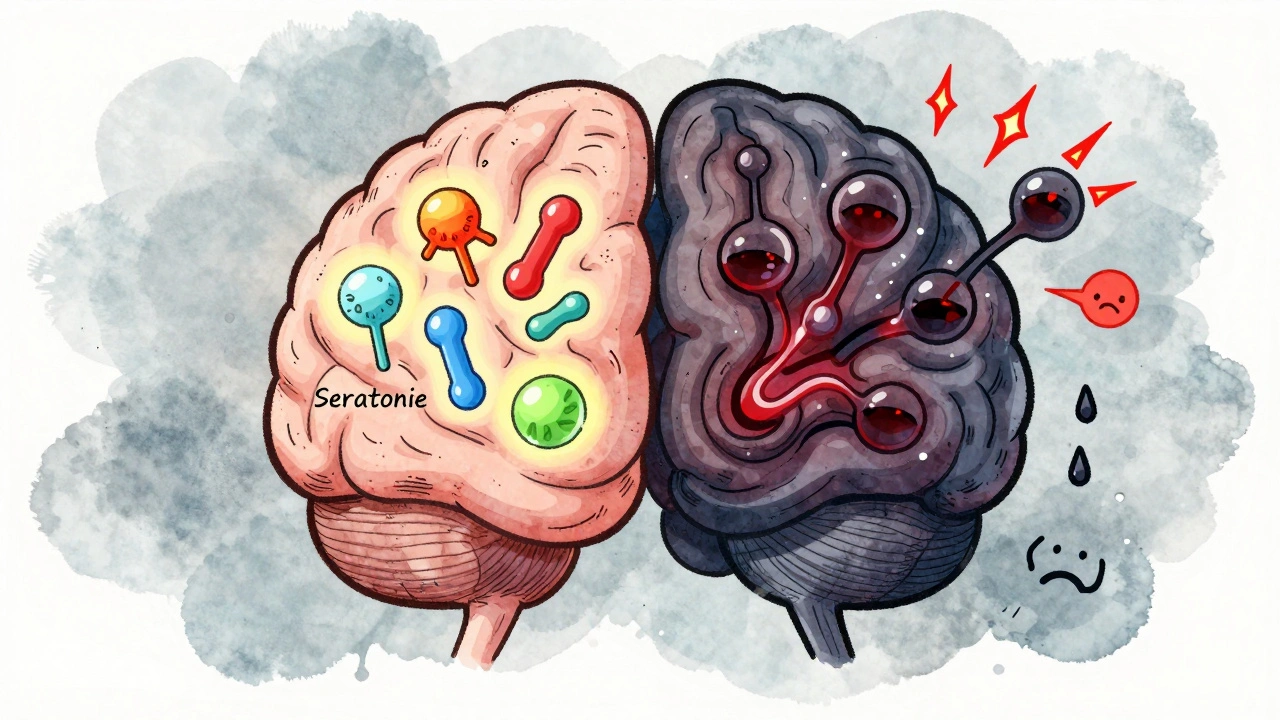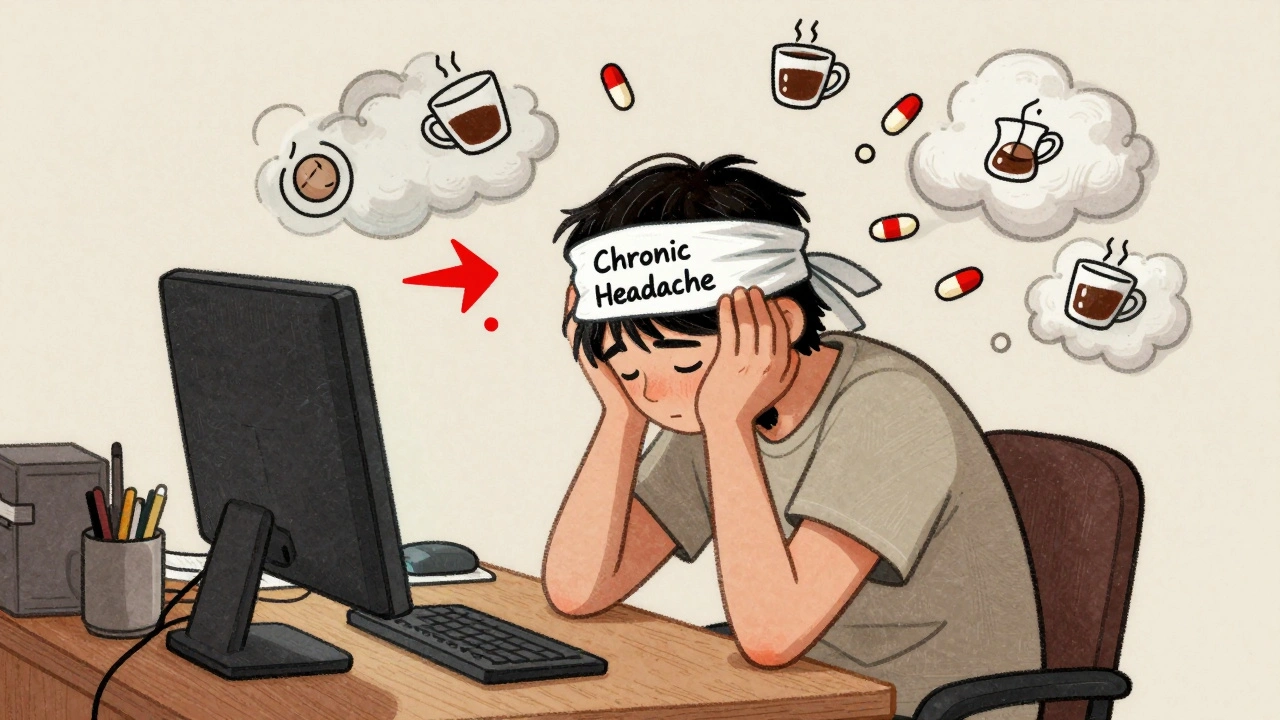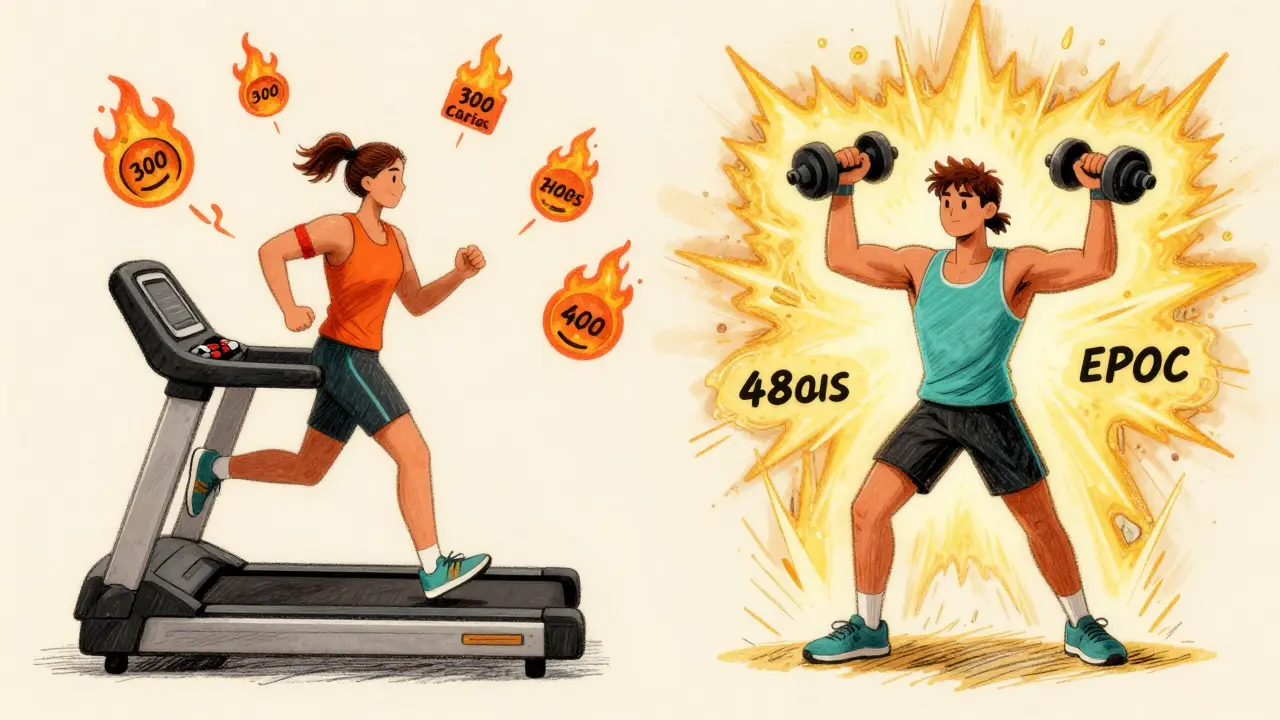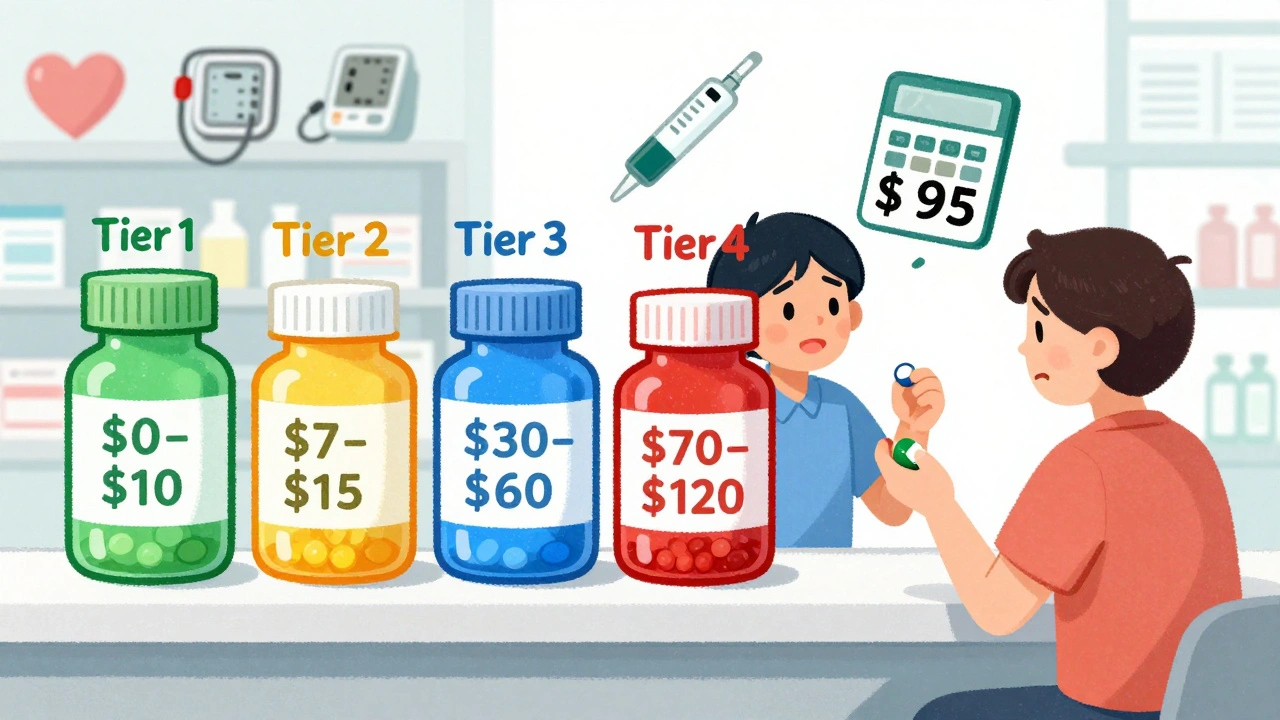Looking to manage your blood pressure? Lisinopril might be a popular choice, but it's not the only one out there. Whether you're after something more natural or another prescription option, there are plenty of alternatives to explore.
Let's kick things off with a natural contender, Hibiscus Sabdariffa. This flowering plant, also known as Roselle, has shown some promising results in clinical trials. Known for its diuretic and ACE-inhibiting traits, it can help lower blood pressure.
Pros
- Natural and generally considered safe.
- Helps reduce sodium levels while keeping potassium in check.
Cons
- Often less potent than lisinopril.
- May not be suitable for severe cases of hypertension.
Intrigued? There's a whole world of options beyond the standard treatments, offering flexibility for those seeking alternatives. Stay tuned as we dig into both pharmaceutical and herbal options, weighing the pros and cons of each choice.
- Hibiscus Sabdariffa
- Losartan
- Amlodipine
- Enalapril
- Hydrochlorothiazide
- Valsartan
- Ramipril
- Diltiazem
- Captopril
- Conclusion
Hibiscus Sabdariffa
When it comes to seeking alternatives to manage blood pressure, Hibiscus Sabdariffa is a standout natural remedy. Commonly known as Roselle, this vibrant plant is not just a pretty face in your garden. It's been used in traditional medicines for its potential health benefits, particularly in lowering blood pressure.
So, how does this floral wonder work its magic? Hibiscus Sabdariffa is believed to have diuretic properties, which means it can help flush out excess sodium from your body. This is crucial because excess sodium can contribute to high blood pressure. At the same time, the plant has ACE-inhibiting properties similar to some common blood pressure meds, which is why it's often mentioned alongside pharmaceutical options.
Pros
- It's a natural remedy, which is appealing for those looking to go the herbal route.
- Known for reducing sodium levels without affecting potassium levels, keeping things balanced.
- A safe option for many, provided you don't have severe blood pressure issues.
Cons
- Not as potent as Lisinopril or other prescription medications, making it less suitable for those with significantly high blood pressure readings.
- Might require consistent use over time to see noticeable results.
In a study evaluating the effects of Hibiscus on hypertensive patients, it was found that consistent consumption of hibiscus tea helped reduce systolic and diastolic blood pressure. Now, while studies like these are promising, remember that individual results can vary.
If you're considering giving Hibiscus Sabdariffa a shot, you might start with hibiscus tea. It's an easy and tasty way to incorporate this remedy into your daily routine. But hey, make sure to have a word with your doctor before making any changes to your health regimen, especially if you're on other medications. Balancing natural remedies with your current regimen can enhance efficacy without unexpected side effects.
Losartan
If you've been prescribed Lisinopril but are considering your options, Losartan might be worth a look. It's a member of a drug family called angiotensin II receptor blockers (ARBs), and it works by keeping blood vessels from narrowing, which can help lower blood pressure.
One of the cool things about Losartan is its effectiveness. It's often compared with Lisinopril in research, and many find it equally effective, with some people even tolerating it better. Imagine having a reliable alternative that could suit your body's needs just as well!
Pros
- Generally well tolerated by patients, often with fewer side effects.
- Doesn't tend to cause a persistent cough, a common side effect of Lisinopril.
- Offers protection for those with chronic kidney disease, especially those with diabetes.
Cons
- May not be suitable for pregnant women, as it can harm the fetus.
- Can cause some dizziness, especially when you start taking it.
- Sometimes requires regular kidney function monitoring.
The effectiveness and side effect profile make Losartan a favorite among doctors and patients alike. Whether it's the absence of that annoying cough or the compatibility with existing kidney conditions, it's certainly a contender in the blood pressure battleground. Keep in mind that what works for one person might not work for another, so always chat with your doc before making changes.
Amlodipine
Amlodipine is something you might've heard of if you're dealing with high blood pressure. It's part of a class of drugs known as calcium channel blockers. What's cool about these is they help relax blood vessels, which means blood can flow more easily. And hey, when blood flow improves, blood pressure tends to level out a bit too.
Amlodipine is often used to treat not just hypertension but also angina, which is chest pain due to poor blood circulation to the heart. It's pretty versatile in that way. If you're looking for an alternative to Lisinopril, this could be a solid pick.
Pros
- Relaxes blood vessels, making blood flow easier and reducing blood pressure.
- Effective for treating angina as well as hypertension.
- Less likely to cause a dry cough compared to some other blood pressure meds.
Cons
- Can cause some swelling in the ankles or feet.
- Might lead to dizziness if not taken as prescribed.
- For some, it might take a bit to get used to its effects on the body.
If you’re curious about how Amlodipine stacks up statistically when used as an alternative to other blood pressure meds, take a look at some recent findings in this space.
| Drug | Effectiveness in Lowering BP | Common Side Effects |
|---|---|---|
| Amlodipine | Moderate to High | Ankle swelling, dizziness |
| Lisinopril | High | Dry cough, kidney issues |
Remember, it’s important to talk with your healthcare provider before making any switches. They can help weigh the pros and cons based on your unique situation, so you're taking the best approach for your health.
Enalapril
Ever wonder if Enalapril could be a good alternative to Lisinopril? It's another member of the ACE inhibitor family, much like Lisinopril, and it's used to manage high blood pressure and heart failure. Enalapril works by relaxing blood vessels, making it easier for blood to flow and your heart to pump.
This drug's been around for a while and has a solid track record in the medical community. It's pretty straightforward to use and usually comes in tablet form. People appreciate it because it can help reduce the risk of strokes and heart attacks by keeping blood pressure in check.
Pros
- Lowers blood pressure effectively.
- Can be used for heart failure and chronic kidney disease.
- Long history of use with a well-established safety profile.
Cons
- Possible side effects include dizziness, cough, and elevated potassium levels.
- Not suitable for pregnant women.
- Requires regular monitoring of kidney function and electrolytes.
Want to know a cool fact? Enalapril was discovered in 1981 and helped pave the way for a whole class of blood pressure meds. It's like the big brother in the ACE inhibitor family.
In the end, if you're looking for something familiar and widely used, Enalapril might just be your guy. But always chat with your doc to figure out what's right for your specific situation.
Hydrochlorothiazide
Ever heard of Hydrochlorothiazide? It’s a popular diuretic often prescribed for high blood pressure and fluid retention. It helps by making your kidneys get rid of extra salt and water from your body. This process reduces the volume of blood, lowering the strain on your heart.
One of the key perks of hydrochlorothiazide is its reliability. Doctors have leaned on this drug for years because it's effective for many folks dealing with hypertension.
Pros
- Widely used, with a solid track record of success.
- Helps reduce the risk of stroke and heart attack.
- Can be used alone or combined with other blood pressure medications.
Cons
- May lead to lowered potassium levels, so you might need to monitor your diet or take supplements.
- Increased urination can be inconvenient for some people.
- Not suitable for those with kidney issues without careful doctor supervision.
It's worth mentioning that Lisinopril alternatives like hydrochlorothiazide aren't a one-size-fits-all. It could be just what you need, especially if your doctor thinks a diuretic would work well with your current meds. Keep up with regular check-ups to make sure your potassium levels are where they need to be, and your kidneys are in good shape.
| Key Feature | Detail |
|---|---|
| Diuretic Effect | Increases urine output to lower blood volume. |
| Common Use | Hypertension, fluid retention. |
| Main Benefit | Reduces risk of stroke and heart attack. |

Valsartan
Valsartan is one of those reliable go-tos in the world of blood pressure management. It belongs to a group of drugs known as ARBs (Angiotensin II Receptor Blockers), which work by relaxing blood vessels so blood can flow more easily. This makes it effective against high blood pressure and reduces the risk of strokes and heart attacks.
Valsartan might be an appealing alternative to Lisinopril if you're looking to dodge some of its common side effects. While both meds aim to control hypertension, Valsartan doesn’t usually come with a pesky dry cough, a complaint some folks have with Lisinopril.
Pros
- Generally well-tolerated with fewer side effects like cough compared to ACE inhibitors.
- Effective in reducing high blood pressure and associated risks.
- Can be used in cases where Lisinopril might not be suitable due to side effects.
Cons
- Still a prescription drug, so it requires a doctor’s guidance and supervision.
- Potential for dizziness, especially if you're starting or changing your dose.
- Like all medications, it might not be suitable for everyone—pregnant women or those with liver issues, take note.
If you're thinking about taking Valsartan, it's always best to have a conversation with your healthcare provider—they can help work out if this is the right track for you. Sometimes, managing high blood pressure is all about finding the treatment that clicks with your body and lifestyle.
Ramipril
Considering an alternative to Lisinopril? Ramipril is another ace up your sleeve. It’s part of the ACE inhibitors family, just like Lisinopril, which means it works in a similar way to expand blood vessels and make it easier for your heart to pump blood. This action can help lower high blood pressure and reduce the risk of heart disease.
Ramipril is often prescribed not only for hypertension but also for heart failure, especially following a heart attack. It's pretty versatile, but that doesn't mean it's for everyone. So, what makes it stand out?
Pros
- Well-tolerated and effective for reducing blood pressure.
- Also protects the kidneys, especially beneficial for those with diabetes.
- Can improve survival chances after a heart attack.
Cons
- Some people may experience a persistent cough, similar to Lisinopril.
- It may not be suitable if you have certain kidney conditions.
- Can interact with other medications, requiring careful monitoring.
Let’s dive into some numbers. A study showed that patients using Ramipril had a 3.8% risk of stroke, compared to 5.1% for those not taking it, highlighting its effectiveness in cardiovascular protection.
| Outcome | Ramipril Group | Control Group |
|---|---|---|
| Risk of Heart Attack | 12.5% | 15.3% |
| Secondary Stroke Risk | 3.8% | 5.1% |
For those wary of the side effects of Lisinopril, Ramipril offers a familiar yet slightly tweaked profile. It's worth chatting with your healthcare provider to see if it's the right fit for you, especially if you're dealing with a mix of hypertension and heart health issues.
Diltiazem
Thinking about giving Diltiazem a shot? This medication is part of the calcium channel blocker family, meaning it works by relaxing the muscles of your heart and your blood vessels. So if you've got hypertension or certain heart conditions, this could help keep things under control.
Diltiazem gets to work by stopping calcium from entering the heart and artery muscle cells. Less calcium means less contraction – basically, it keeps your vessels relaxed and wide. This can lead to lower blood pressure and a steadier heartbeat, which is pretty important if you're facing cardiovascular issues.
Pros
- Effective at reducing heart rate and blood pressure.
- Comes in both short-acting and long-acting options, giving you some flexibility.
- May improve exercise tolerance in individuals with angina.
Cons
- Might cause side effects like dizziness and fatigue, especially when starting.
- Not the go-to for folks with severe heart failure.
- Can interact with other medications, so keep your doc in the loop.
For those who are number-crunchers, here's a quick look at how Diltiazem stacks up against Lisinopril and another common alternative, Amlodipine.
| Medication | Blood Pressure Reduction | Common Side Effects |
|---|---|---|
| Diltiazem | Moderate | Dizziness, fatigue |
| Amlodipine | Moderate to high | Swelling, fatigue |
| Lisinopril | High | Cough, dizziness |
Overall, Diltiazem is a solid option, especially if other treatments have let you down. Just keep in mind the possible interactions and side effects. Always good to chat with your healthcare provider before switching things up.
Captopril
If you're considering alternatives to Lisinopril, Captopril might pop up on your radar. It's worth noting that Captopril was actually the first ACE inhibitor ever developed. Its discovery was all the way back in the late 1970s, making it a pioneer in the field of hypertension treatment.
Just like Lisinopril, Captopril works by inhibiting the angiotensin-converting enzyme (ACE), which results in relaxed blood vessels and lower blood pressure. However, Captopril stands out with its rapid onset and shorter duration of action, meaning it might need to be taken more frequently compared to some of its longer-lasting buddies.
Pros
- Proven efficacy with a long history of use.
- Fast-acting, which could be handy in managing acute hypertension episodes.
- Can be a good choice if Lisinopril isn't doing the job.
Cons
- Requires multiple daily doses due to its short half-life.
- Potential side effects include rash and taste disturbances.
Interestingly, a lot of what we know about ACE inhibitors started with Captopril. This seasoned med has paved the way for newer drugs like Lisinopril, but it's still a robust option for those who need to control their blood pressure effectively. It's a bit like texting versus emailing; sometimes, you need that quick response, and Captopril can deliver just that.
Conclusion
Finding the right way to manage your blood pressure isn't a one-size-fits-all deal. With alternatives to Lisinopril ranging from natural remedies like Hibiscus Sabdariffa to pharmaceuticals like Losartan and Amlodipine, you've got choices. Each option has its own perks and drawbacks, so consider what fits your lifestyle and health needs.
Here's a quick look at how these options compare:
| Alternative | Pros | Cons |
|---|---|---|
| Hibiscus Sabdariffa | Natural, safe | Less potent, not for severe cases |
| Losartan | Effective for many, well-tolerated | Not for everyone, side effects possible |
| Amlodipine | Long-lasting effect, easy dosing | Swelling in some users |
The choice of a Lisinopril alternative should ideally involve a chat with your healthcare provider. They know the ins and outs of your condition and can guide you in picking the best fit. And remember, lifestyle changes like diet and exercise often go hand-in-hand with any treatment plan for the best results.
It's all about finding what works for you, so keep exploring and asking questions. You're in charge of your health journey. Stay informed and take your time to decide. The goal is to keep that blood pressure in check while feeling your best.









Breanne McNitt
April 10, 2025 AT 01:56I was scrolling through the list and thought it's great to see both natural and pharmaceutical options side by side. Hibiscus tea can be a refreshing addition to a heart‑healthy diet, especially if you enjoy a warm cup in the morning. For folks who prefer a prescription, Losartan and Amlodipine are solid choices with a track record of effectiveness. Just remember that any switch should be discussed with your healthcare provider to avoid unwanted interactions. It also helps to keep an eye on potassium and sodium intake when using diuretics like hydrochlorothiazide. Overall, the variety gives us room to customize treatment to our lifestyle and preferences.
Ashika Amirta varsha Balasubramanian
April 10, 2025 AT 02:00Reading through the alternatives reminded me how blood pressure management reflects a balance between tradition and modern science. In many South Asian cultures, herbal remedies like hibiscus have been passed down for generations, offering both cultural comfort and potential physiological benefit. Yet, we must also respect the rigor that modern pharmacology brings, especially when dealing with severe hypertension. Losartan’s ARB mechanism elegantly sidesteps the cough issue that plagues ACE inhibitors, showing how drug design evolves to address patient needs. Amlodipine’s calcium‑channel blocking effect exemplifies targeted therapy, reducing vascular resistance without compromising renal function. While diuretics such as hydrochlorothiazide are indispensable, they demand careful electrolyte monitoring to prevent hypokalemia. Ultimately, the best regimen is one that aligns with a person’s genetic background, diet, and comorbidities, guided by an open dialogue with a knowledgeable clinician. Embracing both the old and the new can lead to a more holistic approach to cardiovascular health.
Jacqueline von Zwehl
April 10, 2025 AT 02:03Great rundown; the tables are especially helpful.
Christopher Ellis
April 10, 2025 AT 02:06I see a lot of hype built around natural supplements and I think the data just isn’t there so stick with proven meds because you can’t gamble with your heart health
kathy v
April 10, 2025 AT 02:10When it comes to managing hypertension, the American healthcare system has a responsibility to prioritize proven pharmaceuticals over vague herbal trends.
Losartan, for instance, has decades of peer‑reviewed data supporting its safety profile, something you won't find in a lopsided internet forum.
While it's nice to hear about hibiscus tea, we shouldn't let sentimentality distract us from the reality that blood pressure control is a matter of life and death.
Amlodipine's calcium‑channel blocking action is well understood, and its side‑effects are predictable enough that clinicians can manage them without resorting to guesswork.
Enalapril, as a tried‑and‑true ACE inhibitor, has saved countless American lives and deserves a place in any serious treatment plan.
Hydrochlorothiazide's diuretic effect may sound basic, but it has been a cornerstone of hypertension therapy for generations, and its cost‑effectiveness is unmatched.
Valsartan's lack of cough makes it a superior alternative for patients who cannot tolerate the ACE‑inhibitor induced irritation, a fact supported by robust clinical trials.
Ramipril's additional kidney protection ties directly into the US guidelines for diabetic patients, reinforcing why it remains a staple in our formularies.
Diltiazem, although a calcium‑channel blocker, can be strategically employed when patients also suffer from angina, illustrating the flexibility needed in American practice.
Captopril's rapid onset might appear attractive, but its short half‑life leads to compliance challenges that the US health system simply cannot ignore.
We must also recognize that many of these drugs have been fine‑tuned through FDA oversight, ensuring quality that over‑the‑counter herbal supplements lack.
The bottom line is that while alternative therapies can complement care, they should never replace evidence‑based medicine in the United States.
Patients deserve clear guidance, not a menu of unverified options that can jeopardize their cardiovascular health.
Thus, when selecting a Lisinopril alternative, weigh the extensive data, side‑effect profile, and regulatory approval above anecdotal hype.
In short, stick with the vetted, prescription‑grade options unless your doctor explicitly advises otherwise, because that's the responsible path to a healthier nation.